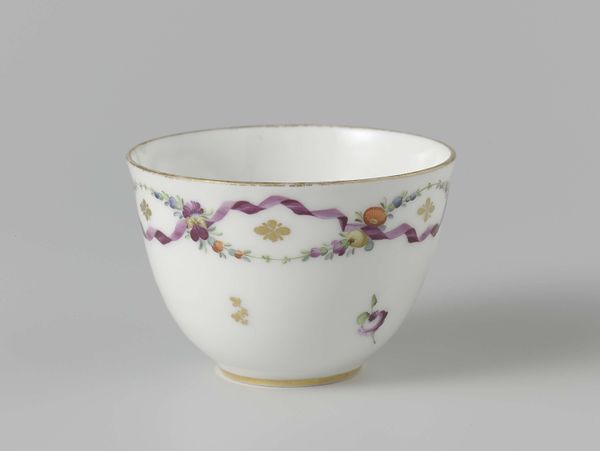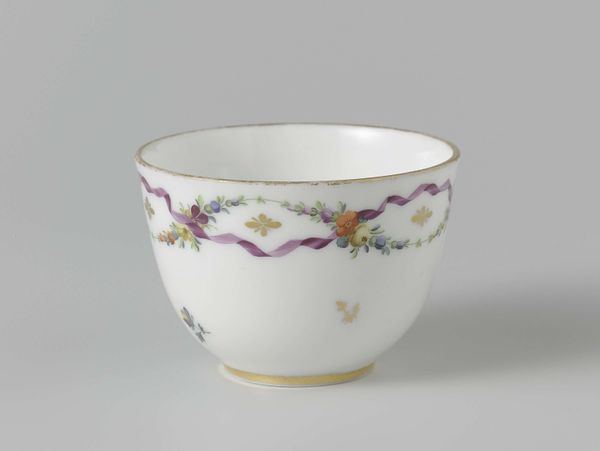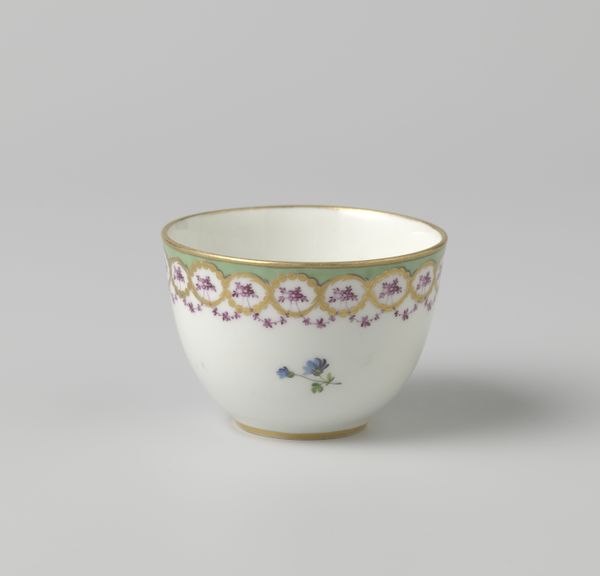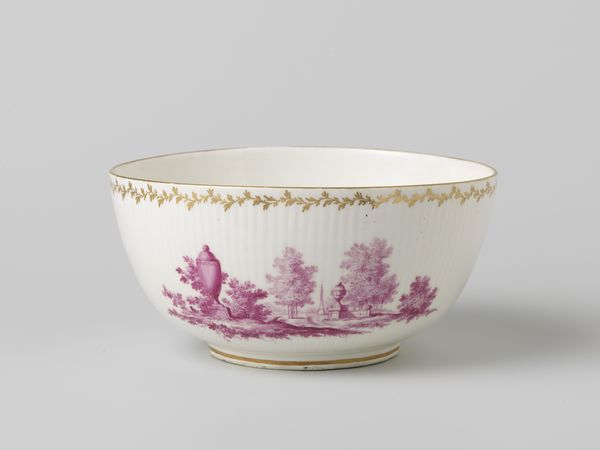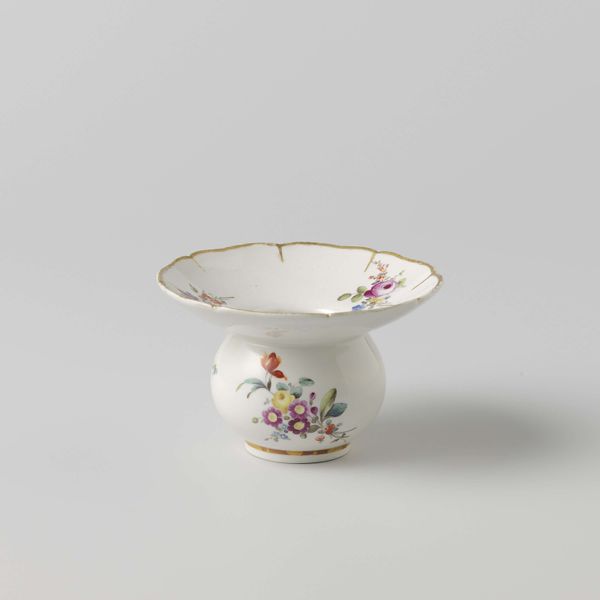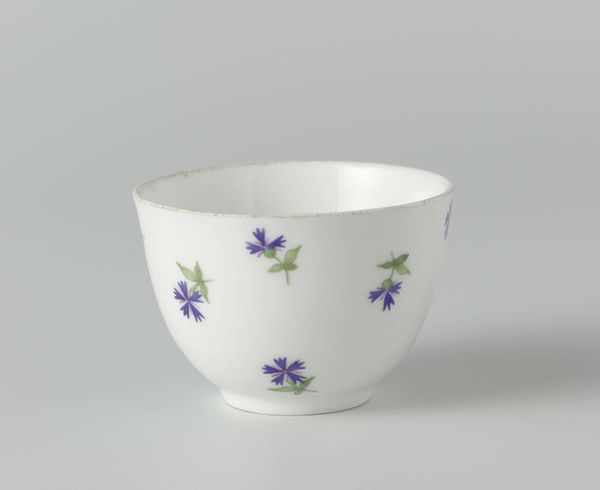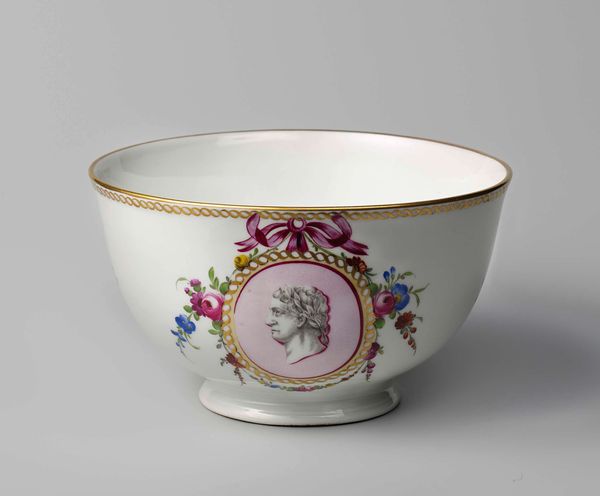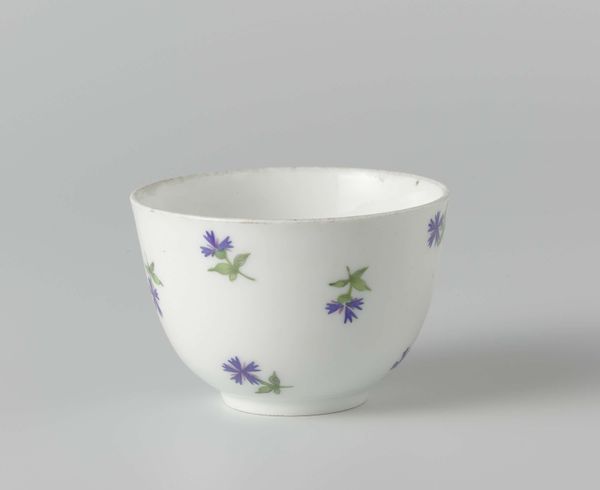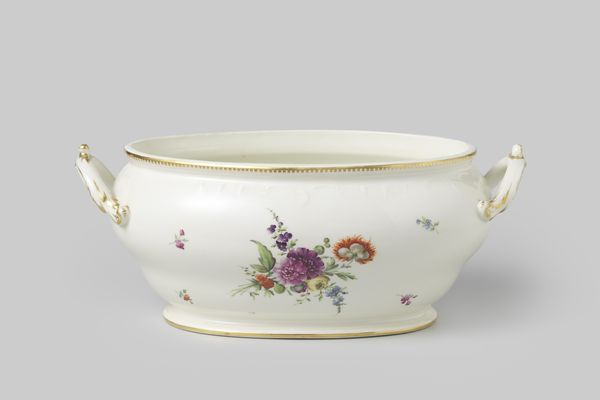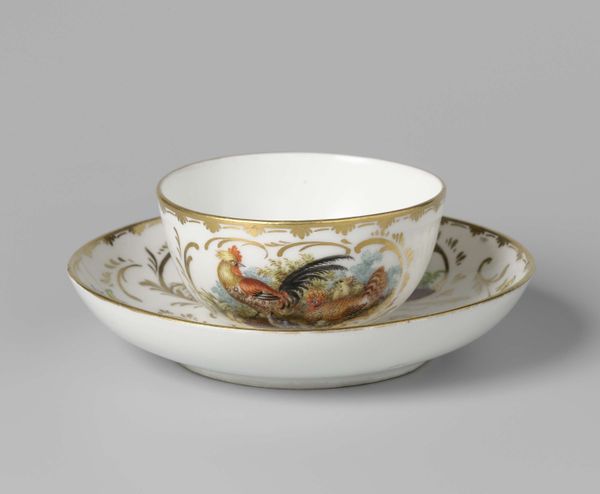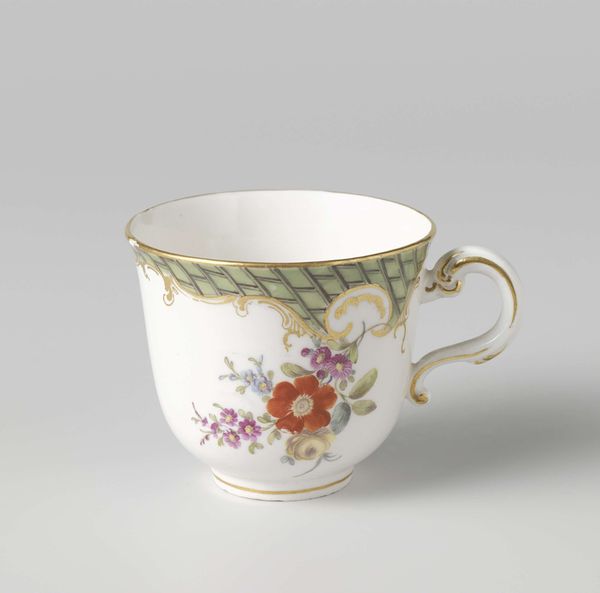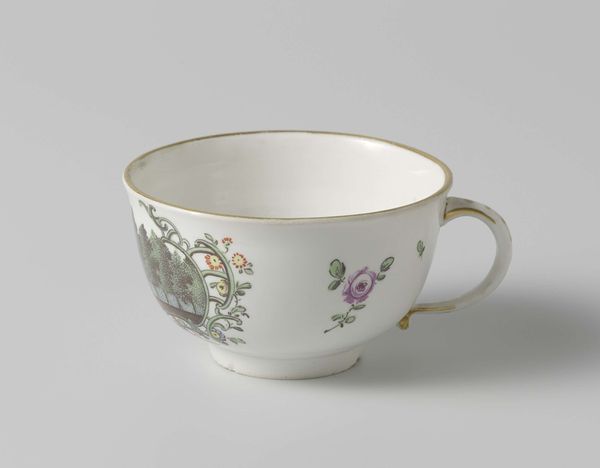
Kop zonder oor, beschilderd met strooibloemen en gouden lovertjes c. 1809 - 1814
0:00
0:00
koninklijkeporseleinfabriekdommerco
Rijksmuseum
painting, ceramic
#
dutch-golden-age
#
painting
#
ceramic
Dimensions: height 5.1 cm, diameter 7.5 cm
Copyright: Rijks Museum: Open Domain
Editor: This is "Head without ear, painted with strewn flowers and golden sequins" from around 1809 to 1814, made by Koninklijke Porseleinfabriek Dommer & Co. It’s a delicate-looking ceramic cup with floral painting. How do you interpret this kind of object? Curator: It’s a fascinating piece that opens a window into the world of early 19th century Dutch society. Porcelain, at this time, was deeply entangled with global trade and colonialism, right? Think about the raw materials, like kaolin, that often came from exploited lands and labor. Editor: So, even something that appears as lovely and quaint as a teacup has a dark underbelly? Curator: Exactly. The dainty floral patterns and gold detailing were signifiers of wealth and status, signaling participation in a consumer culture fueled by systemic inequality. Even the act of drinking tea carries the weight of colonial history, when we remember who got to enjoy those little luxuries. Editor: It makes me wonder, how conscious were the people using this cup about the implications? Curator: It’s a really compelling question. We can only speculate on the levels of awareness amongst the elite class. Did they contemplate the origins of the objects surrounding them, or was there wilful blindness? Either way, this little teacup forces us to think critically about consumption and the stories behind the objects we take for granted. What about you; do you think we apply similar scrutiny today? Editor: Absolutely, thinking about fast fashion and electronics. The cup helps make a historical connection to today’s ethical questions. Curator: Right. It’s about recognising that these beautiful, seemingly innocuous objects are often products of complex social, economic, and political power dynamics. That understanding allows us to engage more critically with art and history, even everyday history.
Comments
No comments
Be the first to comment and join the conversation on the ultimate creative platform.
